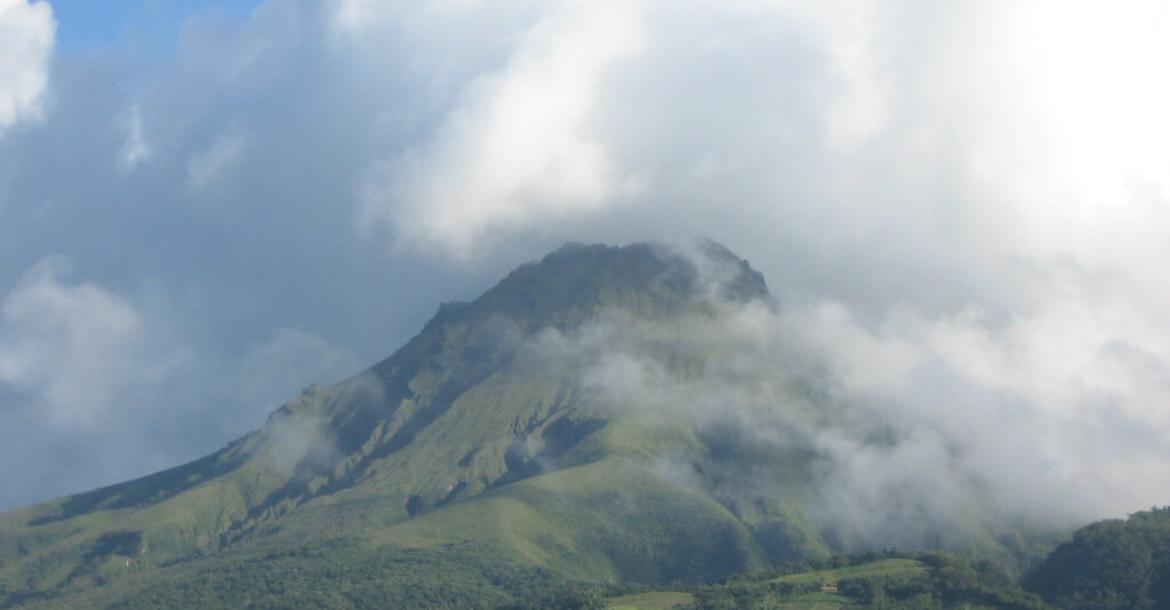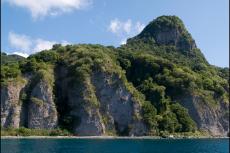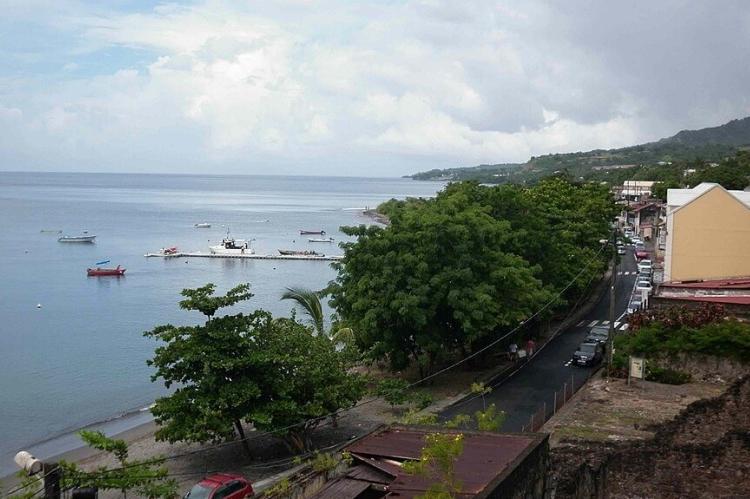The Caribbean Archipelago: A Dynamic Mosaic of Natural Beauty and Cultural Richness
Nestled within the Caribbean Sea, the Caribbean Archipelago is a sprawling and diverse region composed of thousands of islands. This archipelago is more than just a collection of landmasses; it is a tapestry of natural beauty and culture where geological evolution and human history are interwoven.
The Caribbean Archipelago
A Dynamic Mosaic of Natural Beauty and Cultural Richness
Nestled within the Caribbean Sea, the Caribbean Archipelago is a sprawling and diverse region composed of thousands of islands. This archipelago is more than just a collection of landmasses; it is a dynamic mosaic of natural beauty and cultural richness where geological evolution and human history are intricately interwoven.
Exploring the Caribbean Archipelago unveils the intricate interplay between its natural and cultural landscapes. From its geographical features, climatic patterns, and biodiversity to its deep-rooted history and cultural diversity, this region offers a fascinating microcosm of human existence and ecological diversity.

Map of the Caribbean region with topographical features.
Geography
The Caribbean Archipelago, situated in the Caribbean Sea, is primarily the product of tectonic activity and volcanic processes. It encompasses over 7,000 islands, islets, and cays, with larger islands such as Cuba, Hispaniola, Puerto Rico, and Jamaica anchoring the region.
The region's topography is exceptionally diverse, ranging from towering volcanic peaks, like those found in Dominica, to low-lying coral atolls, such as the Turks and Caicos Islands.
The Product of Tectonic Activity
The Caribbean Archipelago's existence is primarily owed to the relentless movements of tectonic plates beneath the Earth's surface. This region lies along the boundary of the North American, South American, and Caribbean plates, where their intricate interactions have created geological wonders. These plates' collision, separation, and subduction have given rise to the diversity of landforms that define the archipelago.
Plate Boundaries and Complex Interactions
At the heart of the Caribbean's geological narrative lies the convergence of tectonic plate boundaries. The North American plate extends from the continent's heartland, the South American plate sprawls across the vast expanse of the continent to the south, and the Caribbean plate occupies a pivotal role in this geological orchestra.
The point of interaction between these plates is not only where they collide but also where they separate and subduct beneath one another.
Collision and Mountain Building
The collision of the North American and Caribbean plates has significantly formed some of the archipelago's most iconic features. As these two plates engage in a geological showdown, they give rise to towering volcanic peaks and mountain ranges.
For instance, the islands of Dominica and Saint Kitts result from this collision, with their dramatic and picturesque volcanic landscapes towering over the Caribbean Sea. These geological giants testify to the immense forces beneath the Earth's surface.
Subduction Zones and Volcanic Islands
In other parts of the Caribbean, the Caribbean plate's subduction beneath the South American plate has led to the formation of volcanic island arcs.
The Lesser Antilles, which includes islands like Saint Lucia and Saint Vincent, is a classic example of this phenomenon. Here, the subduction of the denser Caribbean plate beneath the South American plate gives rise to volcanic activity, creating a chain of islands adorned with majestic peaks and fertile soil for agricultural endeavors.
Separation and Coral Atolls
In contrast to the dramatic volcanic landscapes, the archipelago also features low-lying coral atolls. These are a consequence of the plates separating along certain boundaries.
The Turks and Caicos Islands, a collection of idyllic coral cays, exemplify this geological process. The separation of plates allows for the formation of shallow lagoons and intricate reef systems, providing vital habitats for diverse marine life.
Anchor Points and Larger Islands
While the archipelago encompasses thousands of islands, the more significant landmasses act as anchor points, lending stability and geographical context to the region.
Islands such as Cuba, Hispaniola (shared by the Dominican Republic and Haiti), Puerto Rico, and Jamaica are both geographically significant and cultural and historical epicenters within the Caribbean.
Geographical Significance
The significance of these larger islands within the Caribbean is due to their size and strategic locations within the archipelago. These islands effectively divide the Caribbean into distinct subregions, each with unique geographical characteristics and influences.
For example, the island of Hispaniola, shared by the Dominican Republic and Haiti, stands as a geographic border between the Atlantic Ocean and the Caribbean Sea, marking a boundary with ecological and climatic implications. Likewise, Puerto Rico's central position in the archipelago contributes to its climatic influence, acting as a meteorological barrier in the eastern Caribbean.
Cultural and Historical Epicenters
Beyond their geographical relevance, these larger islands are cultural and historical epicenters within the Caribbean. They have been the stage for significant historical events and pivotal cultural exchanges.
-
Cuba, with its rich history, played a vital role in the Cuban Revolution, which had far-reaching implications for the region.
-
Hispaniola, home to the first permanent European settlement in the Americas, reflects the complex legacies of European colonization, indigenous resistance, and the transatlantic slave trade.
-
Puerto Rico, with its blend of Spanish, African, and indigenous influences, boasts a distinctive cultural identity.
-
Jamaica, renowned for its vibrant music scene, including reggae and dancehall, has had a global cultural impact.
Economic and Political Significance
These larger islands also carry considerable economic and political weight within the Caribbean. Cuba, for example, is the largest island in the Caribbean and has significantly influenced the region's politics and international relations.
Puerto Rico's status as a U.S. territory has profound political implications, while its economy and trade relations influence the wider Caribbean. The Dominican Republic is a vital player in regional politics and trade.
Diverse Topography
The topography of the Caribbean Archipelago is characterized by a rich variety of landforms, each shaped by distinct geological processes. This diversity provides a unique and dynamic landscape across the region.
The diverse topography of the region reflects its complex geological history. These landforms, shaped by volcanic activity, coral formation, and geological processes, contribute to the archipelago's ecological richness.
Volcanic Peaks and Rugged Terrain
Several islands, such as Dominica and Saint Lucia, exhibit volcanic origins, towering peaks and rugged terrain. These landforms result from past volcanic activity and create stunning, dramatic landscapes. The volcanic soil supports lush vegetation, making these areas biologically diverse.
In Dominica, for instance, Morne Trois Pitons, an extinct volcano, rises to over 1,300 meters (4,400 feet) and is home to rich rainforests, rivers, and waterfalls, offering unique hiking opportunities.
Low-Lying Coral Atolls
In contrast to volcanic islands, the Caribbean Archipelago includes low-lying coral atolls like the Turks and Caicos Islands. These flat, sandy landforms are barely above sea level, making them highly vulnerable to sea-level rise. They feature shallow lagoons connected to the sea by narrow channels and intricate coral reef systems.
These coral reefs are vital for marine biodiversity and popular destinations for snorkeling and diving, offering excellent opportunities for underwater exploration to witness vibrant marine life and intricate coral formations.
Mountain Ranges and Lush Rainforests
Larger islands like Puerto Rico and Jamaica are characterized by extensive mountain ranges, which, in turn, give rise to lush rainforests. These mountainous areas offer cooler climates and diverse ecosystems.
-
El Yunque National Forest in Puerto Rico is part of the Luquillo Mountains and features one of the few tropical rainforests in the U.S. National Forest System.
-
The Blue Mountains in Jamaica rise to over 2,100 meters (7,000 feet) and are known for their rich biodiversity, including unique species like the Jamaican boa.
These mountainous landscapes provide ecological diversity and serve as destinations for eco-tourism and outdoor activities such as hiking and birdwatching.
Underwater Landscapes
Beneath the surface, the Caribbean's diverse topography includes coral reefs, underwater caves, and drop-offs, serving as essential habitats for marine life and popular spots for diving and snorkeling. These underwater landscapes are home to a rich array of colorful fish, various coral species, and even sunken shipwrecks, making them sought-after recreational and scientific exploration locations.
A notable example is The Bahamas, known for its underwater sinkholes, called 'blue holes,' which appeal to divers and researchers alike.
Climate
The Caribbean Archipelago boasts a diverse climate, with a blend of tropical and subtropical zones that define the region's unique character. This climatic diversity, occasionally punctuated by the formidable challenge of hurricanes, underlines the archipelago's ecological vitality and influence on agriculture and ecosystems.
Tropical and Subtropical Climate Zones
The climate of the Caribbean Archipelago predominantly falls into the tropical category. However, the southernmost islands, notably Trinidad and Tobago, deviate from this norm, experiencing a more arid, semi-desert climate. Across the region, warm temperatures are a year-round constant, although there are subtle variations between the wet and dry seasons.
Impact of Hurricanes
A defining characteristic of the Caribbean climate is the presence of hurricanes during the hurricane season. These meteorological phenomena significantly influence the region's climate and ecosystems, prompting rigorous preparedness and mitigation efforts. While challenging, the occasional hurricane is integral to the Caribbean's climatic identity.
Microclimates and Rainfall Patterns
Microclimates are a widespread feature within the archipelago, influenced by elevation and proximity to the sea. Coastal areas experience higher humidity, profoundly affecting the local climate and vegetation. In contrast, mountainous regions offer cooler temperatures, presenting a welcome escape from the heat of the lowlands. These microclimates are instrumental in fostering ecological diversity.
The rainfall distribution across the archipelago is shaped by the prevailing trade winds, leading to distinct wet and dry seasons. Islands like Saint Lucia, for instance, enjoy the benefits of abundant rainfall during the wet season.
This natural irrigation system plays a pivotal role in the region's agriculture and ecology, nurturing fertile soil and promoting the growth of diverse plant species. The result is a lush landscape that contributes to the overall greenery and biodiversity of the island, a testament to the interplay of climatic factors in shaping the Caribbean's natural splendor.
Biodiversity
With its enchanting landscapes and diverse ecosystems, the Caribbean region is a biodiverse paradise where nature's beauty unfolds in myriad forms. It encompasses many habitats, from pristine coral reefs and dense rainforests to arid coastal areas, each teeming with a remarkable variety of species.
This remarkable biodiversity is shaped by the region's geographical location, climatic conditions, and complex geological history. Here, we delve into the intricacies of the Caribbean's rich natural mosaic.
Geographical and Ecological Diversity
The Caribbean's biodiversity is a testament to the region's geographical diversity. It spans an intricate web of islands, islets, and cays, each contributing to ecological complexity. The presence of volcanic islands, low-lying atolls, mountainous terrains, and coastal plains generates a broad spectrum of habitats.
Coral Reefs and Marine Life
One of the Caribbean's most iconic features is its extensive coral reefs. These underwater ecosystems are essential for marine biodiversity and shelter many fish species, sea turtles, and other aquatic organisms. The Caribbean's coral reefs, including the Mesoamerican Barrier Reef and the Belize Barrier Reef, are among the largest and healthiest in the world.
Rainforests and Terrestrial Biodiversity
The Caribbean harbors lush rainforests in mountainous regions, particularly on larger islands such as Puerto Rico, Jamaica, and Dominica. These rainforests are characterized by dense vegetation, towering trees, and diverse flora and fauna. The biodiversity of these regions is remarkable, with unique species like the Jamaican boa and Puerto Rican parrot.
Endemism and Unique Species
Endemism is a defining feature of Caribbean biodiversity. Many species in the region are unique and found nowhere else on Earth. For example, the St. Lucia racer, a non-venomous snake native to Saint Lucia, is critically endangered and found exclusively on the island.
The Caribbean also boasts a rich avian population, with numerous endemic bird species, including the Cuban tody and the Bahama woodstar.
Challenges and Conservation Efforts
While the Caribbean's biodiversity is a source of wonder, it faces numerous challenges. Habitat destruction, climate change, invasive species, and overfishing threaten the delicate balance of ecosystems. Coral reefs are particularly vulnerable to rising sea temperatures and ocean acidification.
Conservation efforts are crucial to preserving the region's unique natural heritage, and initiatives like marine protected areas and reforestation projects are underway to mitigate these threats.

Political map of the Caribbean region.
Culture
Historical Significance
The history of the Caribbean Archipelago is a complex narrative marked by an intricate interplay of indigenous cultures, European colonization, the transatlantic slave trade, and the subsequent struggles for independence.
Indigenous groups such as the Taíno, Carib, and Arawak once thrived in the region, leaving remnants of their cultural heritage in artifacts and place names. However, the arrival of Christopher Columbus in the late 15th century marked the beginning of a new chapter in Caribbean history, characterized by European colonization.
The archipelago saw the presence of various European powers, including the Spanish, English, French, and Dutch, each of whom left an indelible mark on the cultural landscape. This colonial legacy is evident in the languages spoken across the region, encompassing indigenous tongues and Spanish, English, French, Dutch, and many Creole languages. The rich linguistic diversity is a testament to the historical collage woven by centuries of European influence.
Perhaps one of the most profound impacts on the Caribbean's cultural landscape was the transatlantic slave trade. The forced migration of African people to the region introduced new traditions, languages, and spiritual beliefs that significantly shaped the archipelago's culture. Elements of African spirituality and indigenous practices often fused with Catholicism, giving rise to a unique syncretic blend of religious rituals and beliefs.
Cultural Fusion and Diversity
The legacy of this historical convergence is a vibrant and diverse cultural landscape. The Caribbean Archipelago is where cultures intersect, intertwine, and adapt, resulting in a cultural mosaic that is as dynamic as it is colorful. This diversity is reflected in the region's languages, where multiple tongues coexist, with many Caribbean residents proficient in several. This linguistic mélange is a living testament to the complex colonial history that forged the region.
Religion in the Caribbean is often a syncretic experience, with Catholicism serving as a base upon which indigenous and African spiritual beliefs are woven. The result is a rich blend of religious practices, traditions, and rituals, each unique to the community in which they are observed. This spiritual diversity is an enduring symbol of the region's cultural resilience.
Music is an integral part of Caribbean culture, and the archipelago has gifted the world with numerous musical genres. From reggae and soca to calypso and dancehall, the music of the Caribbean provides a vibrant soundtrack to everyday life. These musical traditions often carry deep cultural and historical significance, with lyrics that convey stories of resistance, celebration, and love.
Cuisine and Festivals
The culinary landscape of the Caribbean Archipelago is a testament to its diverse cultural heritage. Staples like plantains, yams, and cassava are the foundation for many dishes. The Caribbean flavors result from centuries of cultural exchange, with spices and ingredients borrowed from Africa, Europe, and Asia. This fusion of culinary traditions has birthed a tempting array of flavors, from jerk seasoning in Jamaica to the hearty stews of Puerto Rico.
Festivals are a lively celebration of Caribbean culture. Events like Carnival in Trinidad and Tobago, Junkanoo in the Bahamas, and Crop Over in Barbados are vibrant music, dance, and cultural expression spectacles. These celebrations are an opportunity for revelry and reflect the region's history, with roots in both European and African traditions.
Conclusion
The Caribbean Archipelago is a treasure trove of natural beauty and cultural richness, where geological processes, climatic patterns, biodiversity, history, and culture merge to create a mosaic of remarkable complexity. Understanding this region provides insights into the intricate interplay between nature and humanity, offering a holistic view of a unique and dynamic corner of the world.

















